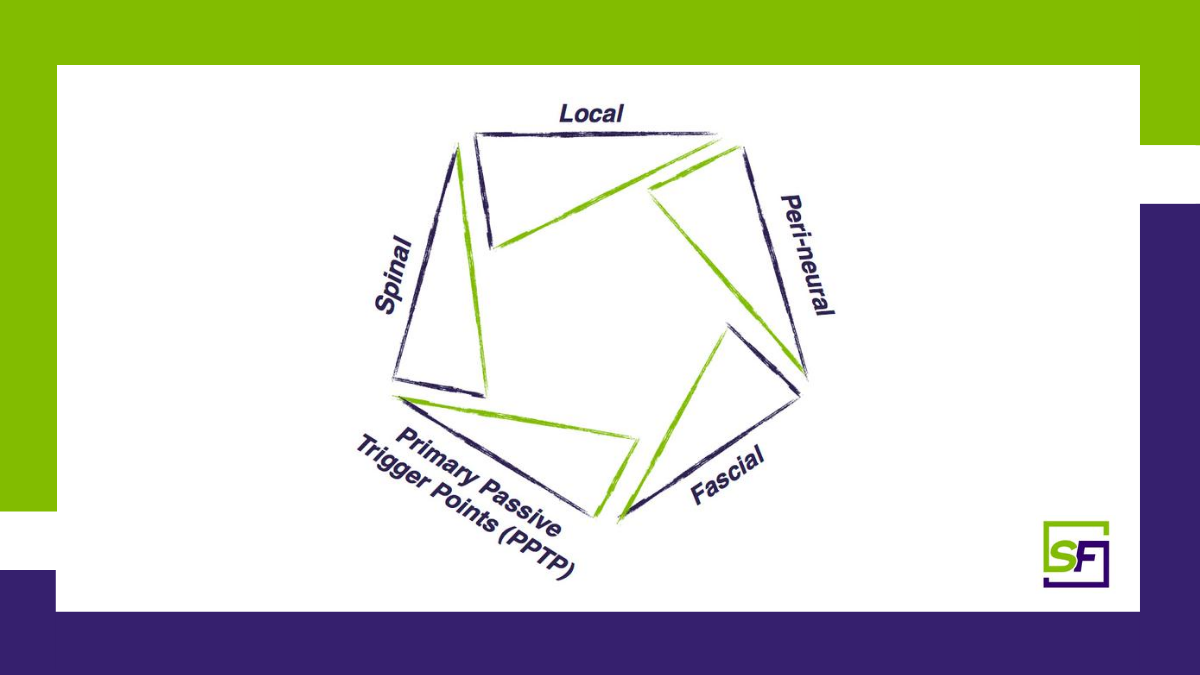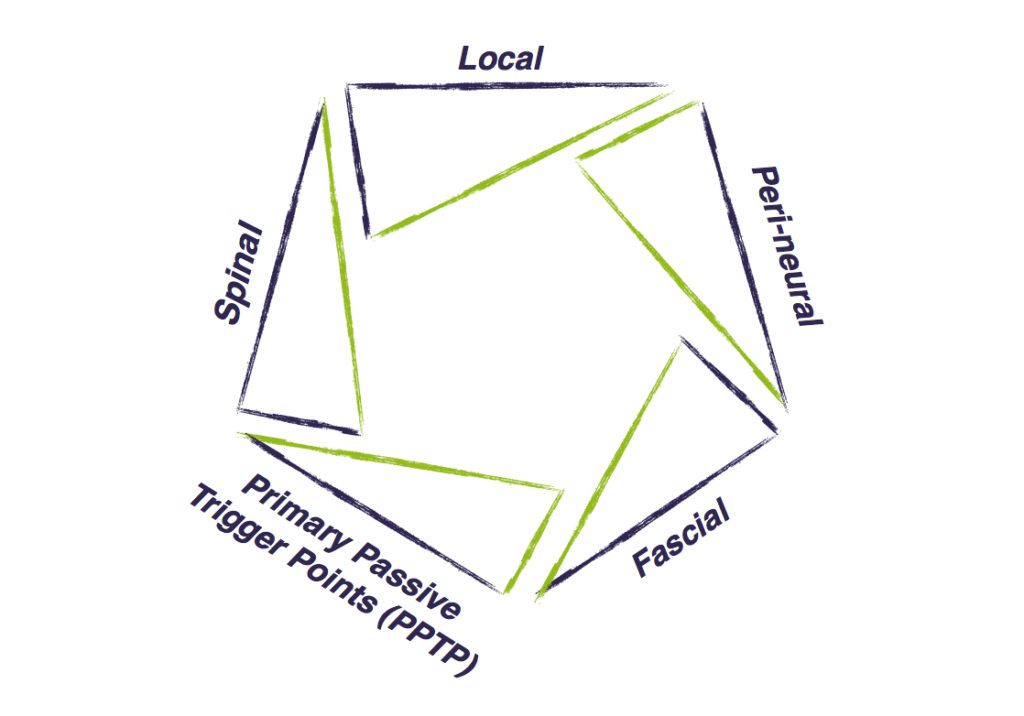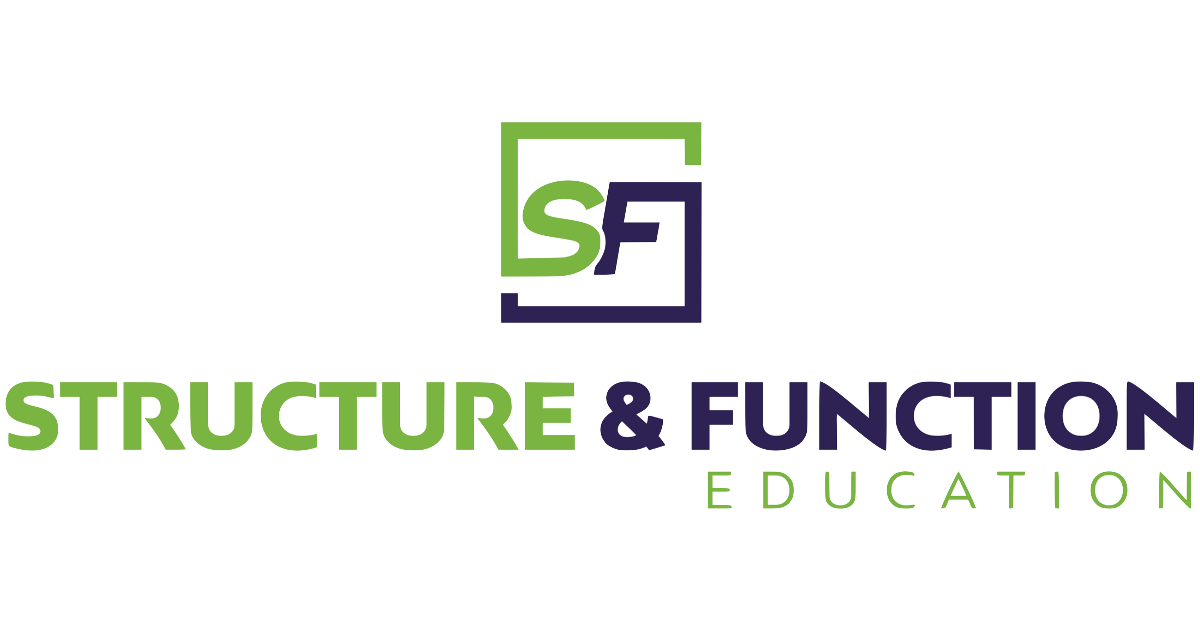
The Pentamodal Method of Dry Needling
I often get the question “How does Structure & Function Education’s dry needling method differ from others?”
My response is as follows:
Structure & Function’s Dry Needling follows a Pentamodal Method, resulting in a comprehensive approach to Dry Needling. Dry Needling is simply an extension of our practice. Our practice is holistic and patient centered. Therefore, we feel as though our dry needling interventions should also be holistic and patient centered. We believe Pain Generators can come from several structures in the body, and at times, there may be no identifiable pain generator at all. Having the understanding, knowledge and ability to alter our intervention based on the patient is vital to our dry needling practice. Our Pentamodal Method allows the clinician to decide which area needs to be addressed based on examination findings.
We consider the following:

Local: Based on local physiological responses to injury (and dry needling is a controlled injury to the local tissue) we know that CGRP, substance P, bradykinin, histamine, and more are all released in the area of tissue damage 1. These inflammatory markers initiate a vasodilation to occur in the local area, improving blood flow. From a pain theory standpoint, we feel needling local tissue will decrease pain via Gate Theory as well as the Conditioned Pain Modulation Theory 1,2.
Segmental: Any peripheral stimulation (including that with a fine filiform needle) will trigger a spinal segmental response based on where the peripheral nerve enters the central nervous pathway1,3. Ascending and descending pain pathways attempt to modulate peripheral pain via central mechanisms.
Peripheral Nerves: All musculoskeletal stress and injury is associated with local sensitization of afferent peripheral nerves locally and leading to the CNS. This local insult sensitizes nerves locally and progresses segmentally as the insult is managed through inflammation. The use of dry needling techniques can manipulate these afferent nervous pathways leading to a CNS desensitization of the nervous structure causing pain and dysfunction4.
Fascial: Fascia connects all tissue within the body. Not only have structural changes5, and visco-elastic changes6 been shown with mechanical stimulation of fascia, but autonomic nervous system connections have been shown as well7. Centers of coordination (CCs) are “considered to be a focal point on the deep fascia where vector forces produced by the contraction of monoarticular and biarticular muscle fibres of a MFU converge during a precise movement”8. Luigi Stecco compared these CCs to acupuncture points, trigger points and biomechanical vectors and found significant overlap8.
Primary Passive Trigger Points: Primary passive trigger points were described by Dr. Houchi Dung (Acupuncture: A Anatomical Approach, 1st ed 2004) and have been found to overlap significantly with trigger points as described by Travel and Simons, Stecco’s fascial manipulation points, traditional acupuncture points, and general motor points of specific muscles.
By combining these five different categories of pain generation identification and treatment, our Pentamodal Method of Dry Needling is not only unique, but clinically effective.
Watch Sue explain the Pentamodal Method
References
- Cagnie B, Dewitte V, Barbe T, Timmermans F, Delrue N, Meeus M. Physiologic Effects of Dry Needling. Curr Pain Headache Rep. 2013;17(8). doi:10.1007/s11916-013-0348-5.
- Moayedi M, Davis KD. Theories of pain: from specificity to gate control. J Neurophysiol. 2013;109(1):5-12. doi:10.1152/jn.00457.2012.
- Butts R, Dunning J, Perreault T, Mourad F, Grubb M. Peripheral and Spinal Mechanisms of Pain and Dry Needling Mediated Analgesia: A Clinical Resource Guide for Health Care Professionals. Inernational J Phys Med Rehabiliation. 2016;4(327). http://www.omicsonline.org/open-access/peripheral-and-spinal-mechanisms-of-pain-and-dry-needling-mediatedanalgesia-a-clinical-resource-guide-for-health-care-professional-2329-9096-1000327.pdf. Accessed May 2, 2016.
- Zhang Z-J, Wang X-M, McAlonan GM. Neural Acupuncture Unit: A New Concept for Interpreting Effects and Mechanisms of Acupuncture. Evid Based Complement Alternat Med. 2012;2012:1-23. doi:10.1155/2012/429412.
- Müller DG, Schleip R. Fascial Fitness. Fascia Tens Netw Hum Body Elsevier. 2012. http://www.terrarosa.com.au/articles/Terra_News7.pdf. Accessed July 21, 2013.
- Stecco C, Stern R, Porzionato A, et al. Hyaluronan within fascia in the etiology of myofascial pain. Surg Radiol Anat. 2011;33(10):891-896. doi:10.1007/s00276-011-0876-9.
- Tozzi P. A unifying neuro-fasciagenic model of somatic dysfunction – Underlying mechanisms and treatment – Part II. J Bodyw Mov Ther. 2015;19(3):526-543. doi:10.1016/j.jbmt.2015.03.002.
- Day JA, Copetti L, Rucli G. From clinical experience to a model for the human fascial system. J Bodyw Mov Ther. 2012;16(3):372-380. doi:10.1016/j.jbmt.2012.01.003.


